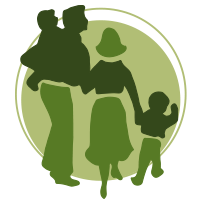“The human foot is a masterpiece of engineering and a work of art”
Leonardo da Vinci
Did you know that 1/3 of all the bones in the body are located in our feet?
- There are 26 of them, and each foot also has 33 joints, 19 muscles, 10 tendons and 107 ligaments.
- Two and a half times our body weight is imposed upon some joints of the foot at each stride we take, for an average of ten 10,000 paces a day.
- Runners hit the ground with a force of two and a half times their body weight.
- During a lifetime the average person will walk more than 250,000 miles. That’s the distance from the Earth to the moon!
- The foot is the furthest structure from the heart’s circulatory system, therefore it is the first part of the body to be affected by decreased circulation and many health conditions, for example diabetes and arthritis, will first display themselves in the feet.
- Runners hit the ground with a force of two and a half times their body weight.
Now you know why Luck’s Yard Clinic therapists take the health of your feet seriously!
Cathy Taylor, Massage Therapist knows a thing or two about foot & ankle health:
She says “Having suffered 2 broken ankles in my 20’s when travelling, and skipped sensible rehab, they come back to haunt me in my 40’s, so I take this subject very seriously!”
Here are her top tips:
- Circling my feet, both directions, upon waking, before hopping out of bed, to stimulate the release of synovial fluid to lubricate the joints.
- Practice heel lifts twice daily to keep ankles strong (whilst brushing teeth).
- Hanging heels off stairs to lengthen achilles tendon & calf muscles.
- Regular swimming – when swimming front crawl, the leg kick strengthens & mobilises feet & ankles without the trauma of weight- bearing.
Tone advises that “As chiropractors we estimate that half of low back problems we see are related to the feet and gait.
There are few people we examine who have perfect balance on each leg and also a good stance. Many people tend to favour one leg or the other and are unable to stand straight with their hips below them. The feet are so vital for the whole body and yet we just take them for granted.
We often recommend patients to stand more evenly on each foott and stop standing like a ‘teapot’. This is a classic stance and you need only go to a train station and look at the commuters to see how common this posture is.
The Podiatry team at Luck’s Yard refer many patients to the chiropractic team for mobilisation of the feet. Many report pain and tension and occasionally that it feels like they are walking on glass.
When we mobilise and massage the feet, we help the little joints to free up and articulate better. This not only helps the feeling of having lighter feet, but also improves the circulation.
One practical exercise to help is to roll the bottom of the feet on a little practice golf ball each morning to wake the muscles up, and soften the muscles before the start of the day.
Much emphasis is put on shoe wear, see Yvette’s advice below, and how this can support the feet when walking on different surfaces.
The most common foot problems are incorrect shoe wear, such as flip flops in the summer and wellingtons in snow. Both can create undue tension due to lack of support, and cause problems in the feet, plantar fascia and legs.
We have several films for legs and feet on our YouTube page that can be reached on the app, and one that is particularly created to help the feet become more flexible and nimble.”
We have a fantastic Podiatry team here a Luck’s Yard Clinic who keep many peoples feet in tip top health.
Yvette Mann advises that we should all:
- Inspect our feet regularly to keep a look out for athletes foot, fungal nails, verrucas and painful corns or fissures, all of which can be successfully treated by the Podiatry team.
Ankle stability for all ages young or old is vitally important to avoid injuries.
- If you feel that you roll over on your ankles it is worth seeking advice from one of our podiatrists to see if further support in the form of insoles or orthotics could help to avoid injuries and keep you active.
Pippa Mitchell our Nutritional Therapist recommends that everyone should be looking after their bones regardless of your age or sex. Traditionally osteoporosis is considered a condition of old age but it is being diagnosed among both women and men at a much younger age.
Obviously it is better to avoid bone thinning but even if you are at risk and perhaps suffer osteopenia – the beginning of bone thinning – there are many lifestyle and dietary measures you can adopt:
- Exercise every day. Weight bearing exercise include walking (faster paced), tennis, badminton, jogging, dancing etc
- Weights and resistance exercise – use resistance bands and suitable weights.
From a dietary perspective try to make sure you eat an anti-inflammatory Mediterranean-style diet:
- 10 + portions daily of a variety of brightly colored vegetables and fruits (2 portions).
- Make sure you eat adequate calcium: dairy and grass fed meats; or meat-free sources such as curly kale, unsalted almonds, watercress and broccoli, nuts and seeds.
- Eat good quality fats to help your body absorb crucial fat- soluble vitamins (A, E, D and K) which are essential for bone health – for example avocados and olives – both the fruit and oil and use coconut fat for higher heat cooking.
- Increase oily fish: mackerel, herring, wild salmon, line caught tuna, halibut, sardines (2 -3 portions weekly).
- Increase plant forms of protein such as beans, chickpeas, lentils, nuts & seeds that contain useful lignans and isoflavones – compounds useful for bone support.
- Reduce alcohol: make sure you have a few alcohol free days every week.
Reflexology is a method of activating the healing powers of the body through the manipulation of the feet, based upon the theory that different points on the feet, lower leg, hands, face or ears correspond with different areas of the body. It is considered an extremely effective way of balancing the body.
Bunions can result from a problem of wearing poorly fitting, arthritis and some people are genetically predisposed to them. In Reflexology terms, the bunion lies over the neck reflex and this may manifest in neck pain that can be alleviated through a reflexology treatment with our Reflexologist, Frances Box.



